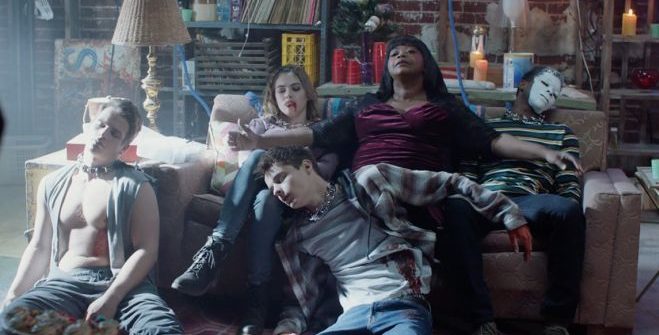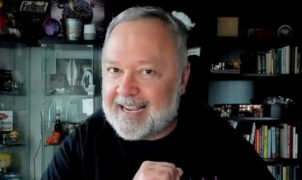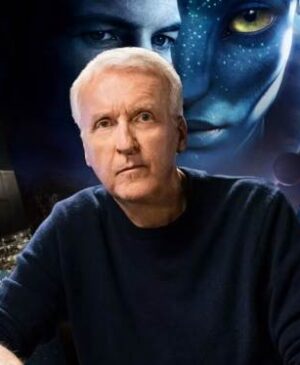MOVIE PREVIEW – For almost 25 years, Ma director/producer Tate Taylor and actor/executive producer Octavia Spencer have been inseparable friends. Beginning with their days as twentysomething roommates to their pivotal partnership in the making of The Help and Get on Up, the pair has grown up together, personally and professionally. Ma was born out of this deep, indelible bond.
“Octavia is my best friend,” says Taylor. “We met as PAs in 1995 on A Time to Kill when it was shooting in Mississippi. We followed each other out to L.A. to see if we could get into the movie business and were roommates for six years.” He laughs, “We even lent each other the same 500 bucks back and forth for about 10 years.”
Although Spencer has won an Academy Award®, has received three Oscar® nominations and has achieved widespread acclaim for her deft, layered performances, what has eluded her is a solo starring role in a feature film. So, she asked Taylor to find her an unexpected lead. Together, they would discover an unflinching, terrifying, R-rated project that would speak to Spencer’s lifelong fascination with true crime and to Taylor’s desire to expand his genre horizons. The partners not only hoped to push themselves, but they also wanted to give audiences an authentic, and horrifying, cinematic experience.
When Taylor learned of a story in development about a group of teenagers who stumble upon a too-good-to-be-true situation—an adult offering them a hidden, safe place to drink and party with their friends—he knew this would be the ideal vehicle to showcase a side of Spencer that audiences have never seen. Spencer and Taylor relished that these were the type of kids that all of us knew, or were, in our youth, and who discover that adult waters are deeper, and more dangerous, than they first seem.
At the heart of the unnerving psychological tale from Blumhouse Productions—the company that has produced such smash hits as Get Out, Split, Glass, Halloween and The Purge franchise—is a mysterious, lonely woman named Sue Ann who seems harmless at first. Friendly but stern, she offers safe harbor to a group of high-school friends looking to party. But Sue Ann is a woman tormented by demons and trauma from her past, and, unbeknownst to her teen guests, she has a more sinister agenda than anyone suspects. “Ma is a cautionary tale about bullying people, as well as a story about a woman who is locked in time,” Spencer says. “Sue Ann stumbles upon a group of teens and makes their vices a lot easier. A lot of the trauma from bullying stays with people, especially people like her.”
Not interested in portraying the character as an archetype, Spencer explored nuances within Sue Ann’s psyche, and found sympathy for the disturbed woman she brings to life. “The audience will identify with and see themselves in every character in this film,” Spencer says. “There are bumps, thrills and scares, and viewers will be uncomfortable at times.” She pauses. “But at the end of it all, I think we have to look at ourselves and understand how we, as viewers, helped create the Mas of the world.”
Taylor believed that, under Spencer’s painstaking care, Sue Ann—much like Kathy Bates’ inimitable Annie Wilkes in Misery—would be both darkly comic and flat-out terrifying and had the potential to become an instant horror icon. Initially sweet and sympathetic, Sue Ann becomes increasingly unhinged and erratic as the movie builds toward a horrifying climax.
The director explains that he aimed to fashion Ma in the vein of thrillers he grew up with, and why audiences are consistently drawn to these stories: “Films like Carrie, Halloween and Misery all have that psychological aspect of ‘Why are they doing this?’ or ‘I know that victim’ or ‘I could see how it could happen on my street…’ It’s the ultimate form of escapism, and we all have aggressions.” He pauses. “If someone in a movie represents someone you don’t like in real life, it’s kind of fun to see their throat get slit on screen. It’s just wrong, and that’s delicious.”
Taylor, Spencer and Norris were excited to be working with Blum, who has mainlined horror into the cinematic bloodstream like no one before him. “I grew up watching horror and thriller films, and Jason Blum has completely reinvigorated the genre,” Spencer says. Taylor and Norris were drawn to the fact that Blumhouse has proved that audiences respond to films that refuse to play it safe. They especially welcomed that Blum was open to Taylor and Spencer shaping the material to match their vision. Ma, notably, was originally crafted with a Caucasian female lead, and Taylor reimagined the part specifically for Spencer.
“Playing the titular role in this film is exciting,” Spencer says. “There were many parts about the project that were very interesting to me, including working with Tate again. He is very collaborative and must have watched the film in his head a thousand times before we were on set. Tate had a clear idea of where he wanted to go, but he also allowed the actors to have some influence in how the characters were crafted. He’s a lot of fun and very talented, so it was exciting to work with him again.”
Spencer got to work alongside Taylor in front of the camera, too. The director plays a small but pivotal role in Ma as Officer Grainger, a deputy sheriff who, early in the film, busts the teens for drinking at a local rock pile, and who later confronts Sue Ann at her home. Spencer, though, was not entirely thrilled with her scene partner. “Tate looks younger than me,” she says, laughing. “I was a little mad about that when we shot our scenes together. I had to make sure I looked good, because he looked really good.”
Be Careful What You Wish for, The Genesis of Ma
When writer Scott Landes, known primarily for his work in comedy television on shows such as Workaholics, was brainstorming ideas for a new screenplay, he suddenly recalled an incident from his youth. “I had a flashback of something that happened in high school,” Landes says. “I grew up in Maryland, and one night when I was 15, I went to a party at a house I’d never been to before. I walked around the back and stepped through cinder block walls into a room with no door and a dirt floor. Eminem was blasting, and a bunch of kids from school were drinking and smoking.”
It was what happened next that seared itself into his memory. “I saw my girlfriend talking to this guy, and it turned out it was his house,” he says. “He had bought us all this alcohol, but I had no idea who he was. The sight of seeing this grown man hanging out with 14-year-olds was terrifying. It always creeped me out, and I thought it was the kind of story that anybody who grew up in the suburbs or in a rural area would relate to.”
Landes initially crafted Ma as a tale with two characters at its center. With Maggie, a young woman who must start over at a high school in a new town, and Sue Ann, a fortysomething veterinary tech who’d never gotten over the horrors of her teen years, the writer found two sides of the same coin. “The storyline became about how it’s such an awkward time as a teen, and how young people will do anything,” Landes says. “If your friend group is going, ‘We are going to jump off this bridge into this reservoir…’ you’re going to do it because you’re so afraid they won’t hang out with you if you don’t. I wanted to play on that tension of these types of friendship, as well as what it means when there’s an older person around that also wants that friendship.”
As he imagined Sue Ann’s role in the story, Landes reflected on adults he’d known while growing up in his small town. “It wasn’t uncommon to have somebody be like, ‘My aunt is cool if we all drink in her basement because she’d rather us do it there than somewhere else,’” he says. “We were kids that packed into our crappy little Civics and Corollas and drove around until we found something to do—whether that was parking on fields or hanging out in unfinished subdivisions. It was that camaraderie where you felt alive and you were having fun. The danger of drinking or smoking a cigarette or a joint was so intense that you would put yourself in a bad situation just because you didn’t want to miss out on the conversation Monday at school.”
Drawing from that inspiration, Landes decided to take the narrative to an even darker place: “What if the guy that night found out I was the boyfriend of the 14-year-old girl he was talking to? What if he wanted to beat me up to be funny? What if he pulled out a gun? You never know. This is an adult who is drunk and hanging with kids.”
As he wrote the spec script, Landes changed his antagonist to a female character. “It was more interesting because I feel like women can be more disarming in those situations, and you can trust them more,” he says. “But what if that’s the craziest person? There’s nothing scarier than somebody who’s obsessed with you and who relentlessly wants to be a part of your life…especially if you don’t want them to be.”
From the moment he finished the script, the project moved forward with unprecedented speed. Within a month, Blumhouse had optioned it. “One of my favorite things about Ma is that it’s not only so scary and unsettling, but the story is so unique,” Blum says. “People love horror movies, but you have to keep reinventing them. You can’t give audiences the same scares because they get bored and stop loving them. Ma’s story is unusual, and she’s a character we haven’t seen before. What we’re always looking for at Blumhouse is answering how can we scare people or make them feel uncomfortable in ways we haven’t seen on screen before.”
Blumhouse partnered with Wyolah, Norris and Taylor’s production company, to bring Ma to the screen. “Jason and I had a lot of mutual friends who had been trying to get Tate and I to work together with him on a project,” John Norris says. “We’d been talking about it over the years and nothing had come out of it, until Jason called and told me he had a script he wanted me to read and an actor in mind for it. There was something in it that resonated, but I wasn’t sure the actor he was considering was the right one. Of course, in order to pass muster, that needed to go to Tate. I gave the script to him; he jumped in and loved it. Tate had come in with the idea of the actor he wanted, Octavia, who was the same person I wanted.”
Norris and Taylor went back to Blum with their pitch of the ideal collaborator to bring Ma to life. “We told Jason that we loved this script, and there’s something here,” Norris says. “Tate said, ‘I really like this for Octavia,’ to which Jason replied, ‘There’s no way she would even consider.’ Tate said, ‘Give me 10 minutes.’ He called her and sent her the script; 24 hours later, she was in.”
“Octavia was frustrated by being offered the same role over and again, and I know how dark a person she can be,” explains Taylor. “She likes to watch what we call ‘murder TV.’ Her idea of taking time off is to get into bed and binge forensic shows. It was perfect timing between her frustration at not having a lead role and when the story came to me. When Blumhouse reached out, I called Octavia and asked if she’d do it. She said: ‘Fuck, yeah.’ Within a year of being greenlit, Ma was in production.
Taylor appreciates the duality Spencer gives the part of Sue Ann/Ma, and that she imbued her character with endearing traits. He explains that is what draws audiences to Ma herself: “You know that Sue Ann’s got PTSD from this long-ago trauma, and you want to tell her to stop…that she doesn’t have to go down this road. That’s what makes her a lovable villain; it also opens up the opportunity to look at the psychology of trauma and what allows people to do terrible things.”
The director lauds both his lead actor’s fearlessness, as well as her trust in his request for her to turn wicked when needed. “I had Octavia do some crazy stuff, and she would say, ‘Okay.’ Then she really got into it.
“We wanted to do something shocking, where the wheels could come off and there weren’t any rules,” Taylor continues. “The story reminded me of that ‘cool’ mom or dad in high school who’d let us party at their house. Even as a kid, I thought, ‘I know they’re not supposed to be letting us do this, but I’m glad they are.’ The movie is so nostalgic. We all remember trying to get people to buy us beer, and there was always that one person who would. Even then, I would think, ‘Why are they doing this?’”
For Taylor and Spencer, this story gave them the opportunity to venture into the pivotal moments of this character’s history. “Why do people do things like this?” the director asks. “Why do we hurt each other, and what’s the genesis of that? Ma wasn’t the usual fare of the genre with people jumping out of the closets holding knives. It allowed us to really get into the mindset of this person.”
For Blum, Ma represented several firsts. “Most horror movies star younger people or teens, and most don’t use big stars,” Blum says. “But this movie was built around the central character in a way that most of our movies aren’t. I didn’t want to do the movie without someone who was recognizable in that part. We were incredibly lucky that Octavia responded to the script. She was a real driving force through the production of the movie and through the postproduction. The person that we have to thank for bringing Octavia to Ma and making the movie happen with her is Tate.”
The film would also be Taylor’s first foray into the horror genre, an opportunity that excited not just Taylor and Norris, but Blum as well. “I knew Tate socially, and I was fascinated by The Help and Get on Up,” Blum says. “It’s common at Blumhouse that we approach directors whose work we admire but who may not have worked in horror and say, ‘Do you want to try something scary?’ He is such a talented director, and he’s particularly good at working with actors. He created a big family throughout the production.”
The young cast was ecstatic about working with Taylor and loved his collaborative, inclusive directorial style. “Tate allowed us to work with the story a lot,” says Diana Silvers, who plays Maggie. “To have so much freedom as an actor takes the pressure off; that allowed us to play. He has great instincts and trusts our instincts, too.”
Adds Corey Fogelmanis, who plays Andy: “Tate is such a great director because he trusts actors and their instincts. He would let us feel out our scenes and do what we wanted with them. It was cool to be given a voice in the collaborative process. I was happy to have him captaining the ship.”
Taylor explains just what he was looking for with his young cast: “It was important that every person watching this film could relate to the kids in that van. That’s why I cast against type…so they could be very relatable. You can easily plug yourself into their situation.”
Source: UIP-Duna Film




















Leave a Reply